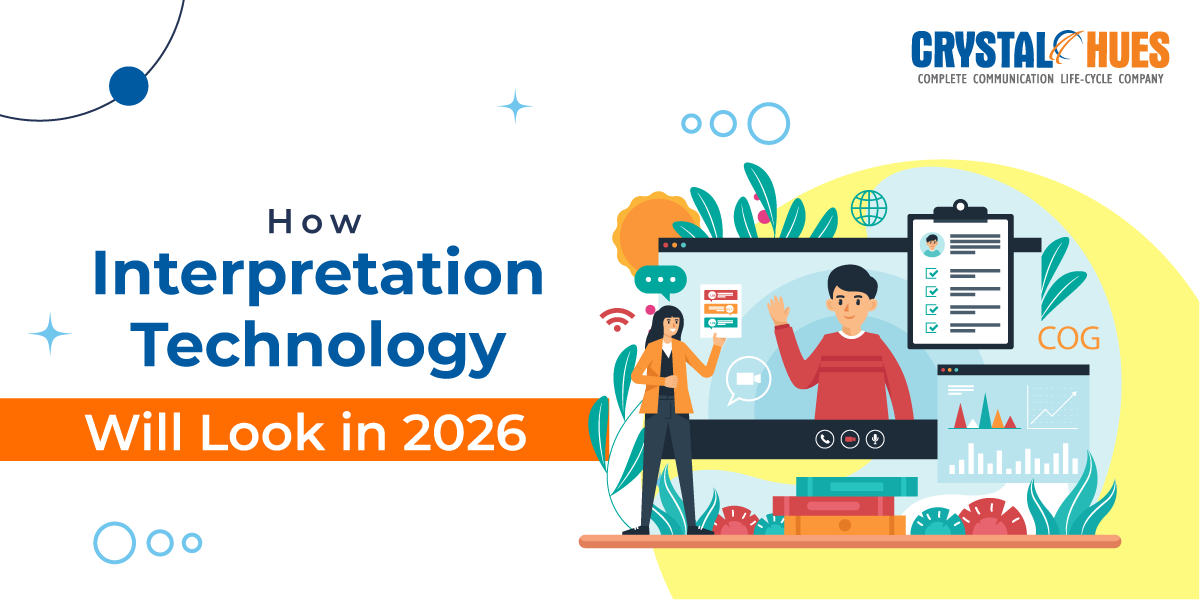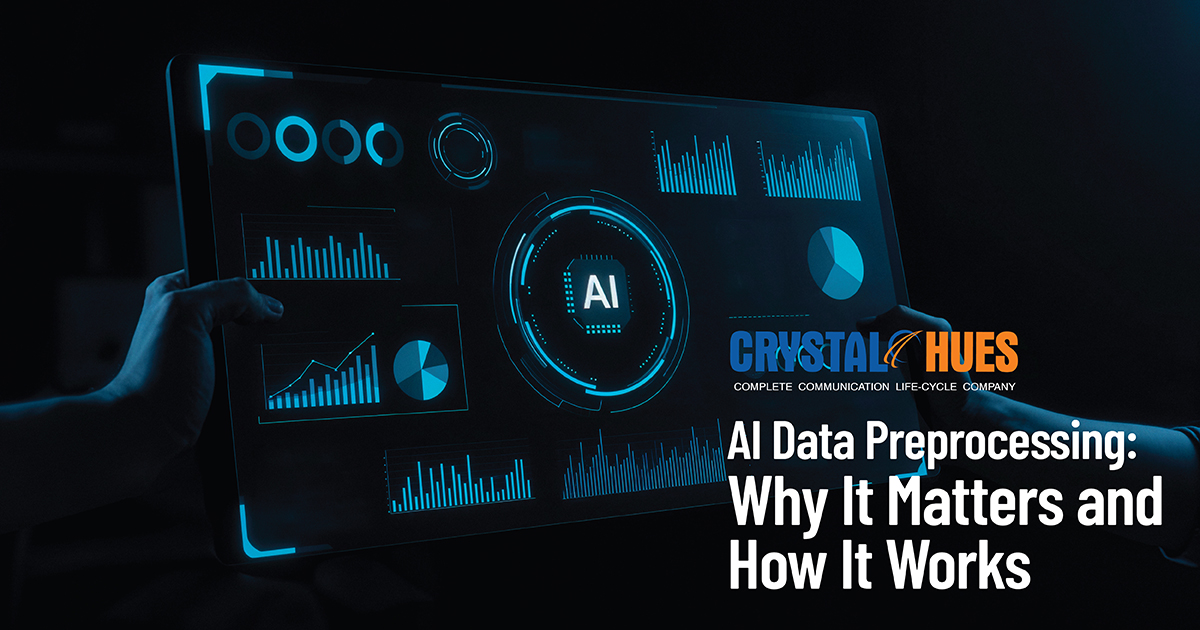
How AI is Transforming Real-Time Interpretation Ahead of 2026
Not long ago, speaking across languages felt impossible without a human interpreter. But thanks to interpretation technology, it’s now as natural as chatting with a friend.
Let’s explore how these technologies evolved—and why they now feel more human than ever.
How AI Fits into Real Interpretation
AI was first thought of as a shiny new toy in the language world. AI could change words into another language, yes, but it didn’t have a clue about meaning. But now, AI is more than a tool; it’s basically a partner. What’s changed?
Artificial intelligence has moved from being a translation tool to becoming a real-time interpretation partner. Here’s how that shift is redefining conversations.
Domain-specific language models don't just try to convert languages; they're able to model an understanding of the conversations that happen in medicine, law, and finance before the definition of terminology. They're much better at picking up on jargon, tone, and cultural coherence.
Imagine you are a physician communicating with a patient who does not speak your language. The latest AI interpreters not only comprehend “myocardial infarction,” but also the best way to explain it coherently, carefully, and without panic.
Companies are building their own systems to avoid blunders that would occur with generic AI systems, so that a legal interpreter or any special circumstance could navigate the conversation without confusion. As a result, there are fewer awkward silences and smoother conversations for everyone involved.
While AI’s intelligence has grown, where that intelligence lives is also changing, from the cloud to your own devices.
Edge AI Devices in Interpretation: Faster, Smarter, and More Private
A significant change in 2023 is that interpretation is not just occurring “in the cloud” anymore.
The physical devices that we carry like phones, tablets, and even AR glasses, have become powerful enough to complete the function themselves. This is called “edge AI." And it means that the required computing does not occur in the cloud. Instead, it happens in the palm of your hand or on your face.
So, why is this important?
Privacy
If sensitive conversations don't have to get interpreted by a remote server, there are fewer opportunities that things will leak.
Speed
These devices turn voice and text into easy-to-read information immediately, meaning that you don't have the delays that used to interfere with remote meetings and interpreter services. A great example of this in action is aiding workers in field locations, utilizing smart glasses to provide interpreting in real time for health consults while keeping everything private and fast.
How Cloud-Based Interpretation Platforms Enable Global Communication
Despite the rise of edge AI, cloud-based interpretation remains essential when scale matters.
The cloud still has its place, mostly when interpretation needs to be scaled. For example, when a business wants to connect with clients all over the world.
Cloud platforms make it easy to connect businesses to an entire world of interpreters without dealing with the logistics or operational costs.
You can simply sign up, identify your needs, and work with an interpreter as needed for your business.
There is plenty of automation, from scheduling to performance tracking, which cuts down on paperwork.
Even the smallest organizations can find quality interpreters without worrying about whether they can afford it. This is a game-changer for startups or remote teams, whose workdays can take place in a variety of time zones and languages.
AR, VR, and Multimodal Interpretation: The Future of Immersive Language Solutions
Once only useful for gamers, AR and VR are revolutionizing how people train, do business, and even provide healthcare.
You can “meet” colleagues or patients in a virtual room, see captions hovering in mid-air, and interact with 3D models in a technical presentation. Multimodal solutions; tools that provide voice, text, and visual input at the same time, enable interpreters to manage different inputs, whether you are in a noisy airport or a quiet classroom.
Imagine walking into a virtual conference, greeting people from all over, and your words appear as subtitles in their glasses. Or think about a surgeon in Buenos Aires who is getting real-time assistance from a specialist in Tokyo, with instant, jargon-free translation and diagrams presented through AR overlays.
Why Human Interpreters Still Matter in the Age of AI
Here’s the thing: Technology is good at fast, accurate translation of languages. But a really good conversation will always need the personal touch of a person.
Interpreters can read the room. They know when a person is uncomfortable or confused. In venues like a courtroom, hospitals, and diplomacy, the training, instincts, and skills of an interpreter can make all the difference. They can pick up on something that would easily slip right past even the smartest AI!
The human touch of authentic communication can’t be replicated. When emotional connection, hidden nuances, or simply being human are at play, human interpreters can diffuse entirely uncomfortable situations and ensure people avoid misunderstanding each other. The future will likely have even more technology, but for now, we still value humans, especially when the stakes are high.
The Future of Interpretation Technology: Collaboration, Ethics, and AI
Looking toward the future, even the tech used for interpreting is now moving toward a more collaborative experience. AI models are actually learning from the conversations they're interpreting and making real-time adjustments to new dialects and slang. And wearable technology (smart watches, smart glasses, earbuds, etc.) will include interpreting into the experience enough that it feels like a new sense.
However, new ethical issues arise.
Who is liable if there is an oversight in what the AI interprets? How do you keep user data handling under wraps?
Bias in automated translation is a real issue. And companies are working competitively to make their models bias-resistant, fair, and secure. But the trend is clearly towards more personalized, more adaptive, and hopefully more relevant experiences for anyone needing to cross a language barrier.
Key Takeaways: How Businesses Can Prepare for the Future of Interpretation
So, how can you utilize all this information? Here are some quick recommendations:
- Hire interpreters and services who use domain-specific AI in business, medical, and legal work.
- For privacy-sensitive settings, consider using edge devices. For eg: field work or confidential conversations.
- Small teams and startups have nothing to fear from the big platforms. One hour of cloud-based interpretation is affordable and scalable!
- For important communications, retain professional human interpreters.
- Keep learning and watching this space. Always select technology that enhances conversations, not diminishes them.
Final Thoughts: The Human Side of Future Interpretation Technology
Interpretation is more than a tech toy or smart program. In 2026 and beyond, interpretation tech will lean increasingly towards helping people understand each other with less friction and more warmth. When technology disappears and real human conversation can continue at its most organic, you'll know you're doing something correct.
You have reached the end. Thank you for reading our blog. We hope you found it informative and useful. For more such content on to help you stay informed on AI and our language services, you can check out our blog page here.
If you have any feedback or suggestions on what you’d like for us to cover or how we can make our blogs more useful, you can reach us through our LinkedIn inbox or email us at digital@crystalhues.in.



